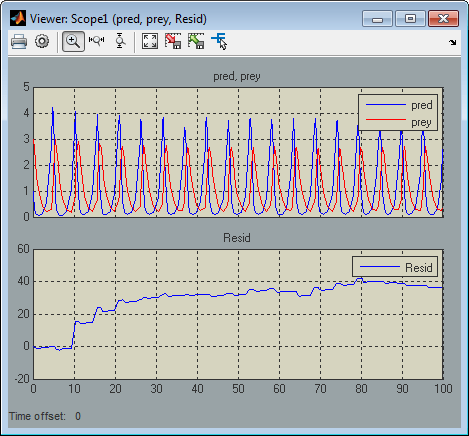mdlProjection
Perturb the solver's solution of a system's states to better satisfy time-invariant solution relationships
Required
No
Languages
C, C++
Syntax
#define MDL_PROJECTION
void mdlProjection(SimStruct *S)
Arguments
SSimStruct representing an S-Function block.
Description
This method is intended for use with S-functions that model
dynamic systems whose states satisfy time-invariant relationships,
such as those resulting from mass or energy conservation or other
physical laws. The Simulink® engine invokes this method at each
time step after the model's solver has computed the S-function's states
for that time step. Typically, slight errors in the numerical solution
of the states cause the solutions to fail to satisfy solution invariants
exactly. Your mdlProjection method can compensate
for the errors by perturbing the states so that they more closely
approximate solution invariants at the current time step. As a result,
the numerical solution adheres more closely to the ideal solution
as the simulation progresses, producing a more accurate overall simulation
of the system modeled by your S-function.
Your mdlProjection method's perturbations of system states must fall within
the solution error tolerances specified by the model in which the S-function is embedded.
Otherwise, the perturbations may invalidate the solver's solution. It is up to your
mdlProjection method to ensure that the perturbations meet the error
tolerances specified by the model. See Perturbing a System's States Using a Solution Invariant for a simple method
for perturbing a system's states. The following articles describe more sophisticated
perturbation methods that your mdlProjection method can use.
C.W. Gear. “Maintaining Solution Invariants in the Numerical Solution of ODEs,” Journal on Scientific and Statistical Computing 7, no. 3 (July 1986).
L.F. Shampine. “Conservation Laws and the Numerical Solution of ODEs I.” Computers and Mathematics with Applications 12B (1986): 1287–96.
L.F. Shampine. “Conservation Laws and the Numerical Solution of ODEs II.” Computers and Mathematics with Applications 38 (1999): 61–72.
Examples
See Also
Version History
Introduced in R2006b




